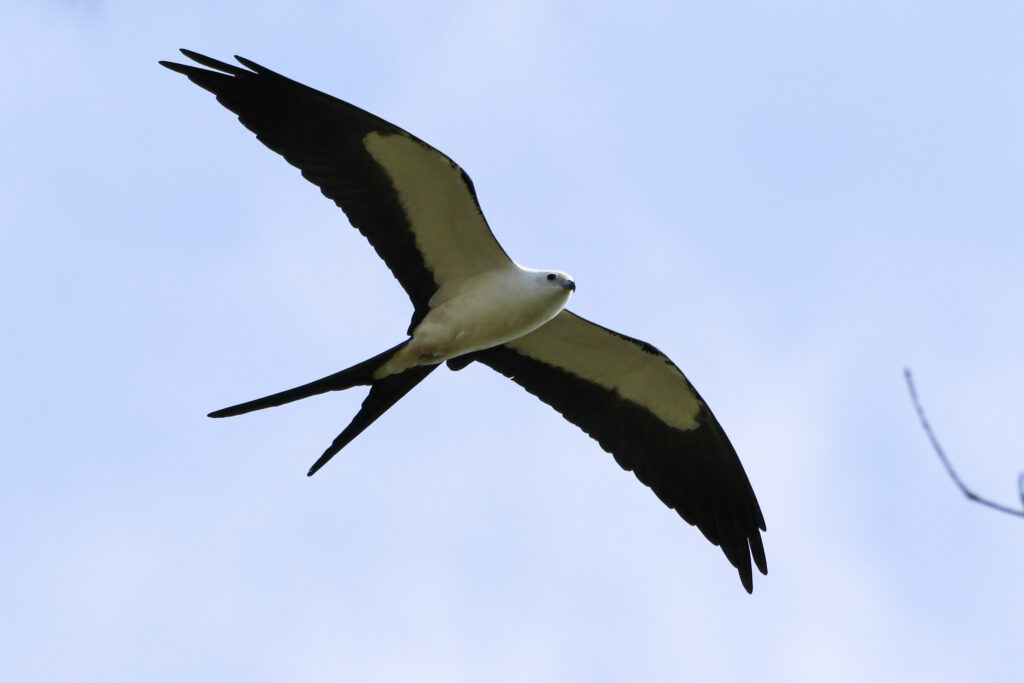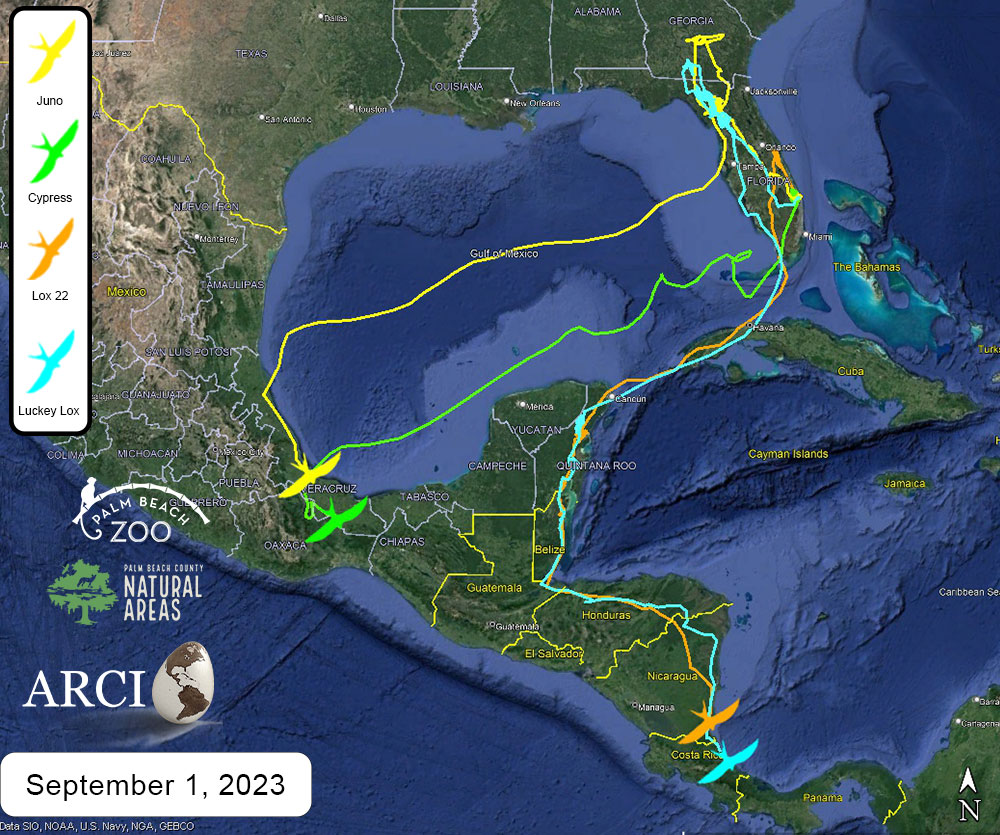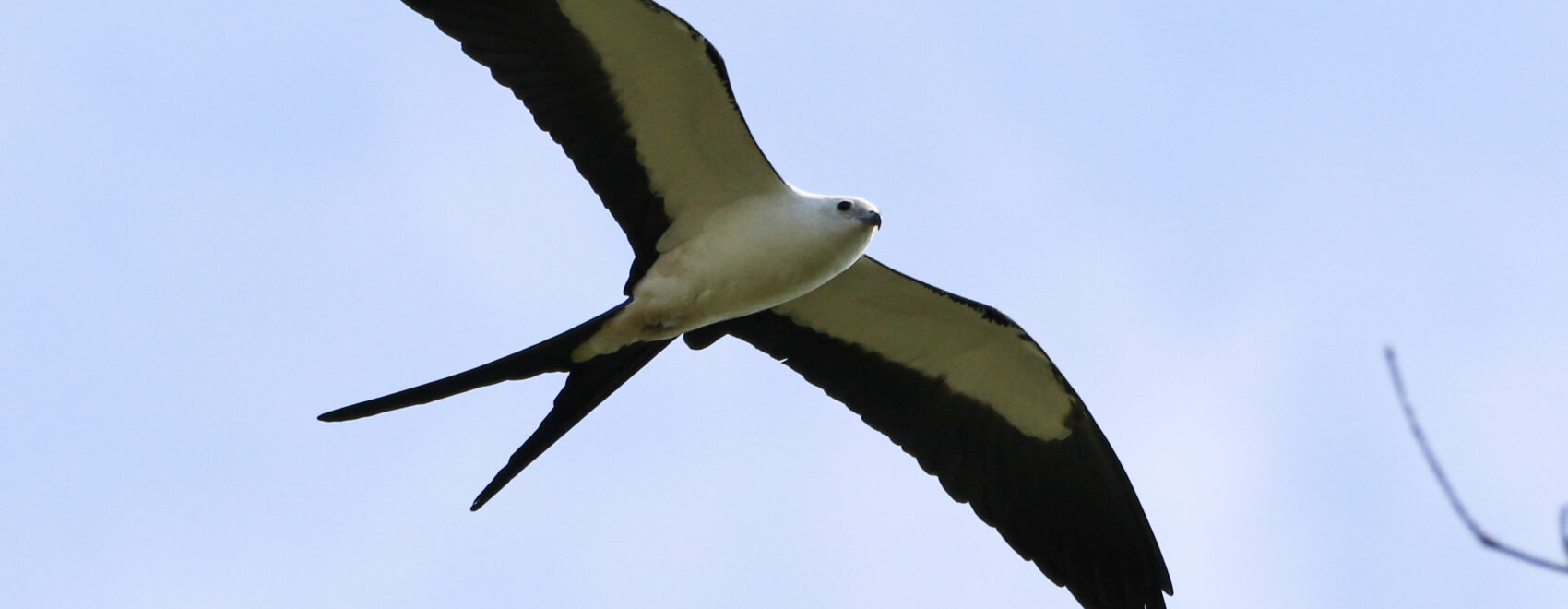ARCI is following four GSM-GPS tracked Swallow-tailed Kites from Palm Beach County, Florida with help from our partners at the Palm Beach Zoo & Conservation Society as well as the Palm Beach County Environmental Resources Management lands. They are all fitted with GSM-GPS unit made by CTT that relays locations back to us like sending a text message through the cell tower network.

Following is an update on their current location and Gulf of Mexico crossing:
As we shared previously, Luckey Lox was the first of ARCI’s tracked Kites to head south and is now in Costa Rica. DNA results are back and Luckey Lox is a female!
Second to make the Gulf of Mexico crossing was Lox 22, after spending pre-migration south of Orlando, Florida. On August 5th she crossed the Florida Keys just west of Curry Hammock and the Florida Keys Hawkwatch at 6pm. After two nights in Cuba, one west of Havana and the other on the west end of Guanahacabibes Peninsula, she was over water, due west, and came into Mexico north of Cancún to enjoy a 13-day stopover of rest and feeding before continuing south. This path is the safest with the least amount of water to cross. Lox 22 has almost caught up to Luckey Lox in Nicaragua.
The only GPS-tracked male, Cypress, stayed in Palm Beach County for his pre-migration. When ready, he left land from the southwest tip of the Everglades, south southwest over the Florida Keys as many kites do. That night however, he took an odd, northeast loop back into Florida Bay. The winds pushed him south southwest missing the Yucatán by 38 miles. Finally, after 70 hours over water, he made landfall south of Veracruz, Mexico on 19 August.
The last of the Palm Beach GPS-tracked Swallow-tailed Kites to cross the Gulf of Mexico was Juno. Juno spent pre-migration preparation in north Florida and Georgia. Her last night in Florida was in Hernando County where she then went quickly to the coast and out over the Gulf from Pinellas County which is a bit unusual for a kite to start across the Gulf from this northern latitude. The wind took her west southwest, the LONG way over the Gulf of Mexico similar to Cypress’ route, but 20 hours faster and farther north, making landfall near Tamiahua, Mexico on 23 August.

All kites will continue their migration overland. The next obstacle will be the Andes Mountains in Colombia.
Palm Beach Zoo & Conservation Society, in conjunction with long-time Zoo sponsor Florida Power & Light Company, have generously provided funding for the solar-powered GSM-GPS transmitters needed to continue this conservation effort.
More migration stories to come!


Thank you for the update-had been wondering, we did not have the numbers this year here at Saddle Creek Park in Lakeland, Fl. Glad to hear they are doing well…look forward to next year.